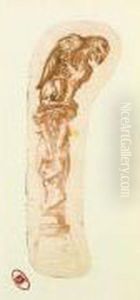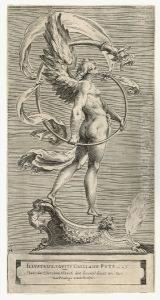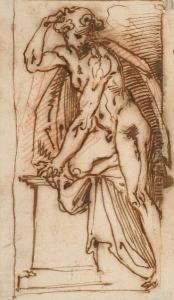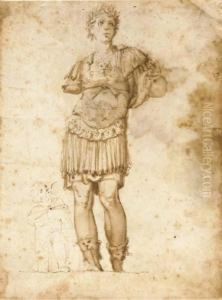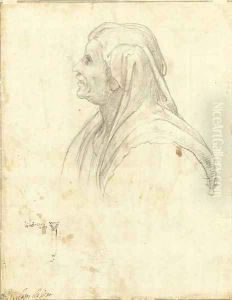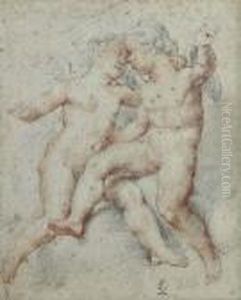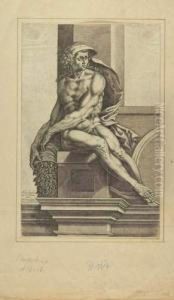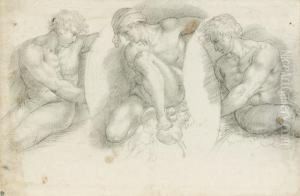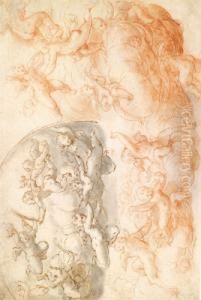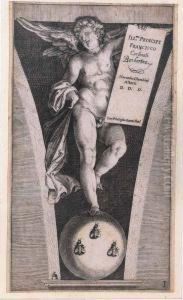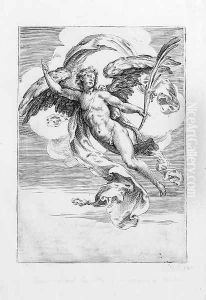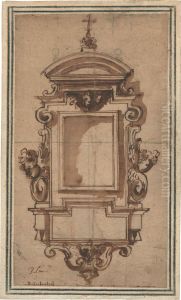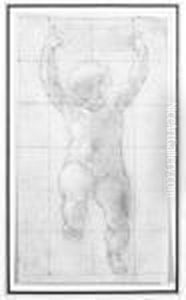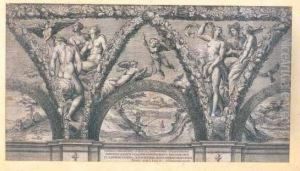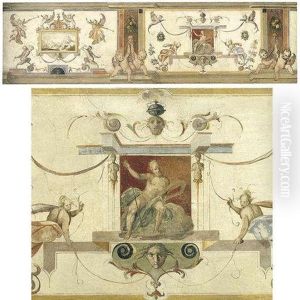Cherubino Alberti Paintings
Cherubino Alberti, also known as Borghegiano, was an Italian engraver and painter born in Borgo San Sepolcro, Tuscany, in 1553. He was part of a family of artists; his father was the painter Alberto Alberti, and his brother Giovanni Alberti was also a well-known artist. Cherubino is most noted for his contribution to the field of printmaking.
Alberti's work as an engraver showcased his mastery of the technique of chiseling, which allowed him to create images with a strong sense of depth and detail. He was influenced by the works of prominent artists of his time, including Raphael and Polidoro da Caravaggio. Cherubino often reproduced the works of these artists, which helped to disseminate their styles and compositions throughout Italy and beyond.
Apart from engraving, Cherubino also painted, although his painted works are less known compared to his engravings. His style in painting was also influenced by the Mannerist movement, which was characterized by elongated figures and unusual complex poses that were typical of the late Italian Renaissance.
Over his career, Alberti produced a significant number of engravings, many of which depicted religious and mythological scenes, portraits, and historical events. His engravings were not only valuable for their artistic merit but also for their role in preserving and communicating the artwork of the period.
Cherubino Alberti's contributions to the arts continued to be influential after his death in 1615. His engravings are still studied today for their technical proficiency and historical value. They are held in various museums and collections around the world, providing insight into the artistic practices and visual culture of the Renaissance and early Baroque periods.
